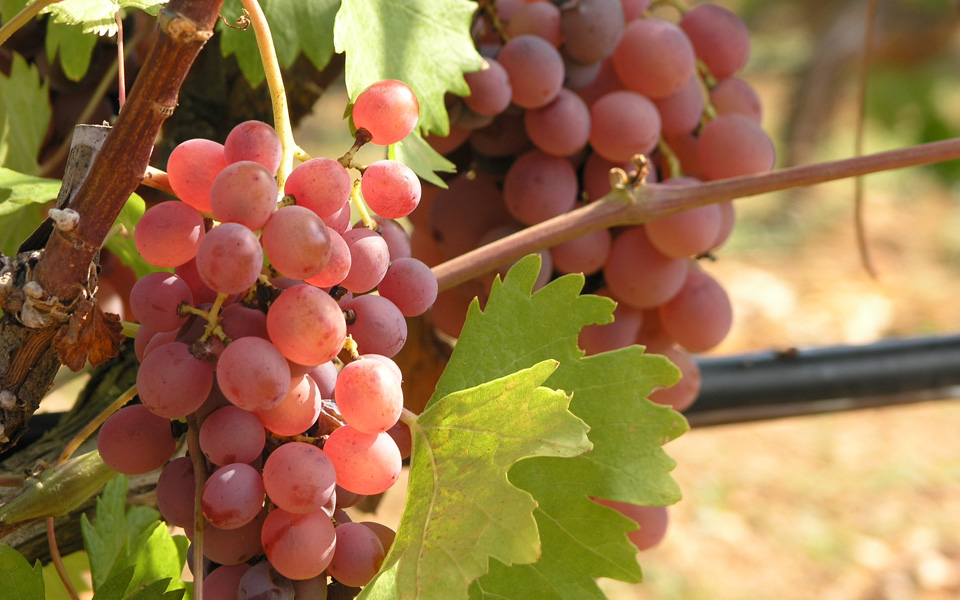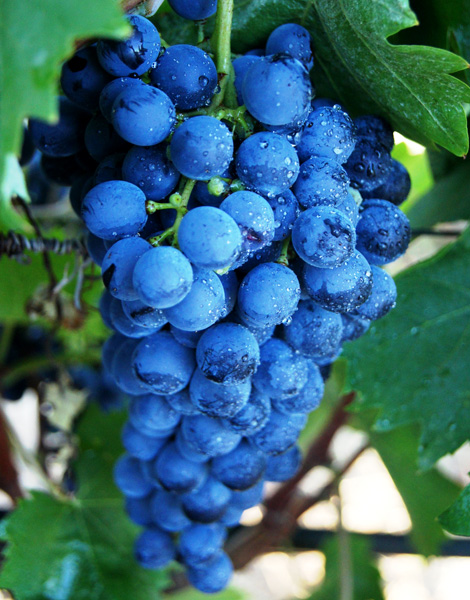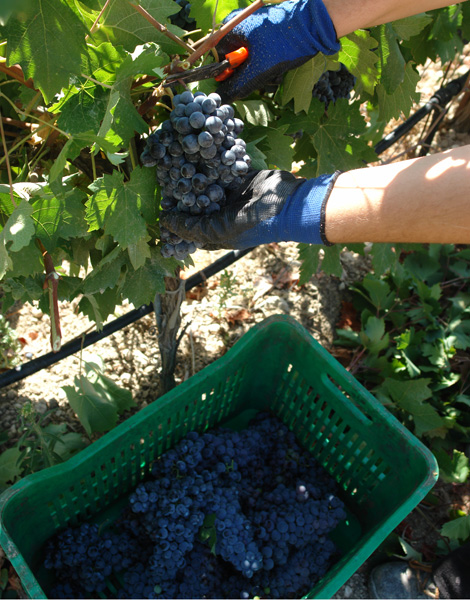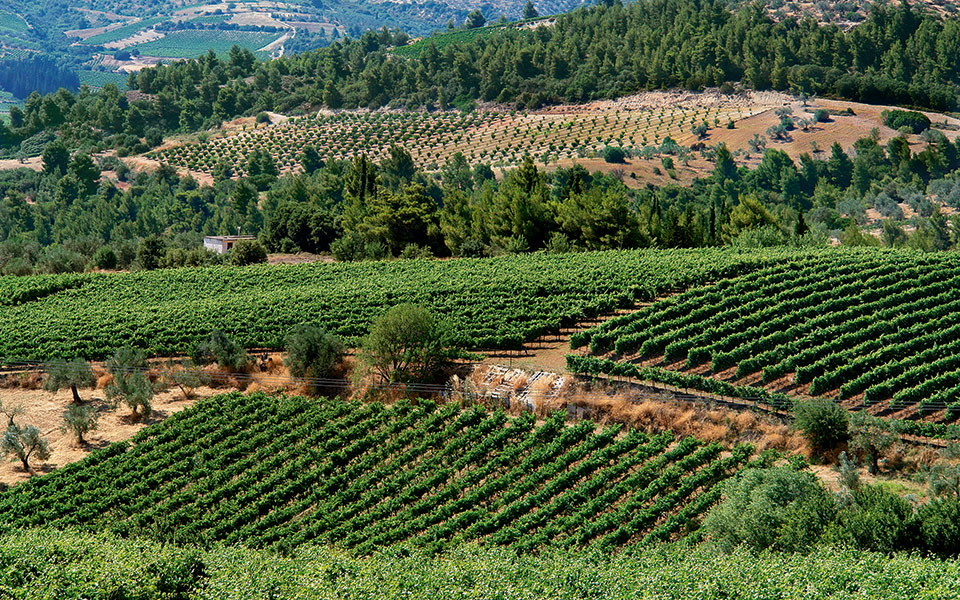Viniculture in the ancient land of Peloponnese goes back at least 4,000-5,000 years. According to legend, the Atreides were particularly partial to Phliasian wine (from the plain of Phlius, i.e. present-day Nemea), while in medieval times, the celebrated sweet wine from the area of Monemvasia, Malvasia, was a big hit throughout the known world. The centuries passed and after the dark period of Turkish occupation which resulted in the uprooting of many vineyards, the wine-loving Peloponnese gradually got back on its feet. So much so that today, in the hands of very capable viniculturists, indigenous grape varieties such as Agiorgitiko, Moschofilero, Mavrodaphne and Roditis are yielding quality wines that are warmly received and awarded at major international competitions, are justifiably claiming a place in the global market and are being exported in large quantities.
Soaring mountain massifs, a lace-like coastline, large plateaus and deep valleys create the appropriate “embrace” for the cultivation and protection of vineyards exposed to the gentle caress of both sea breezes and mountain flows, with the best terroirs located mainly in mountainous and semi-mountainous areas. Despite the geographical diversity of the Peloponnese, the vineyards of the peninsula should be considered as a whole. It is the region with the highest wine production in Greece.
“ Despite the geographical diversity of the Peloponnese, the vineyards of the peninsula should be considered as a whole. It is the region with the highest wine production in Greece. ”

“ The old village of Aghios Georgios that gave its name to the local grape, may not immediately catch the eye. But don’t be too quick to judge. Here, the real treasures lie behind the wineries’ doors. ”
A good starting point for any wine tour of the Peloponnese is Nemea. Around the town, covering an area of some 3,000 hectares, extends the kingdom of the local Agiorgitiko variety, one of Greece’s most important red grapes which accounts for a high percentage of the country’s total production. The plain, hillsides and uplands, at altitudes of 260 to 800 meters, surrounded by major archaeological sites such as Ancient Nemea, Ancient Kleones and Aidonia, are home to vineyards and notable wineries that produce high-quality wines with Protected Designation of Origin (PDO) Nemea certification. The settlement itself, the old village of Aghios Georgios that gave its name to the local grape, may not immediately catch the eye. But don’t be too quick to judge. Here, the real treasures lie behind the wineries’ doors. The latter are numerous and interesting, modern or traditional and more or less accessible to visitors, with most owners quite happy to share the region’s viticultural wealth.
Our tour continues on the Arcadian plateau of Mantineia, one of the coolest Greek wine-growing zones. Here, at a distance of just 16k from the bustling city of Tripoli, at an altitude of 650m, in a spectacular landscape between an ancient theater, almond trees, picturesque villages and low hills, 1,000 hectares of vineyards are planted with pink-skinned Moschofilero, which produces exquisite, particularly aromatic white wines that have found fans all over the world.


Returning to Nemea and proceeding west 160 km, we enter the prefecture of Achaia. The main variety in vineyards here is the white grape used to make the unique, sweet PDO Muscat of Rio Patras, as well as the PDO Mavrodaphne whose history began in 1873, when in a tower house at Petroto in Patra the Bavarian Gustav Clauss, a currant merchant and founder of the Achaia Clauss winery, was inspired by the dark eyes (mavro) of his beautiful fiancée, Daphne, to create this fortified wine that still serves as a benchmark for Greek wine production. Today, the Mavrodaphne grape is cultivated to produce traditional sweet, long-aged wines, but it also figures prominently in the new trend of creating dry wines that are increasingly winning over the demanding palates of oenophiles. Our visit to Achaia would not be complete without ascending to the vineyards of mountainous Aigialeia, where Roditis – the most planted white grape variety in Greece – is masterfully transformed into refreshingly crisp whites.
Continuing southward, we pass through the vineyards of Ilia and Messinia, where international varieties are successfully vying with their Agiorgitiko and Roditis cousins, until we finally reach stunningly beautiful Laconia and the medieval fortress town of Monemvasia. Thanks to the efforts of local producers, the celebrated Byzantine-era wine of Monemvasia, Malvasia, is once again claiming its rightful place, now with PDO certification. Visitors to this area will also have the opportunity to try a number of other interesting wines made from the alluring Kydonitsa and the bolder Petroulianos varieties that are gradually making inroads.
We have left the fortified town of Mystras till the end. In the shadow of the imposing, storied ruins, a glass of chilled PDO Monemvasia-Malvasia in hand, this is the perfect place to reflect on the history of the grape-rich Peloponnese, which is none other than the history of the people who down the centuries have breathed life into the land by cultivating the vine and filling the glasses of oenophiles in Greece and all over the world with fine wine.
“ The Bavarian Gustav Clauss, a currant merchant and founder of the Achaia Clauss winery, was inspired by the dark eyes (mavro) of his beautiful fiancée, Daphne, to create fortified wine Mavrodaphne that still serves as a benchmark for Greek wine production. ”












